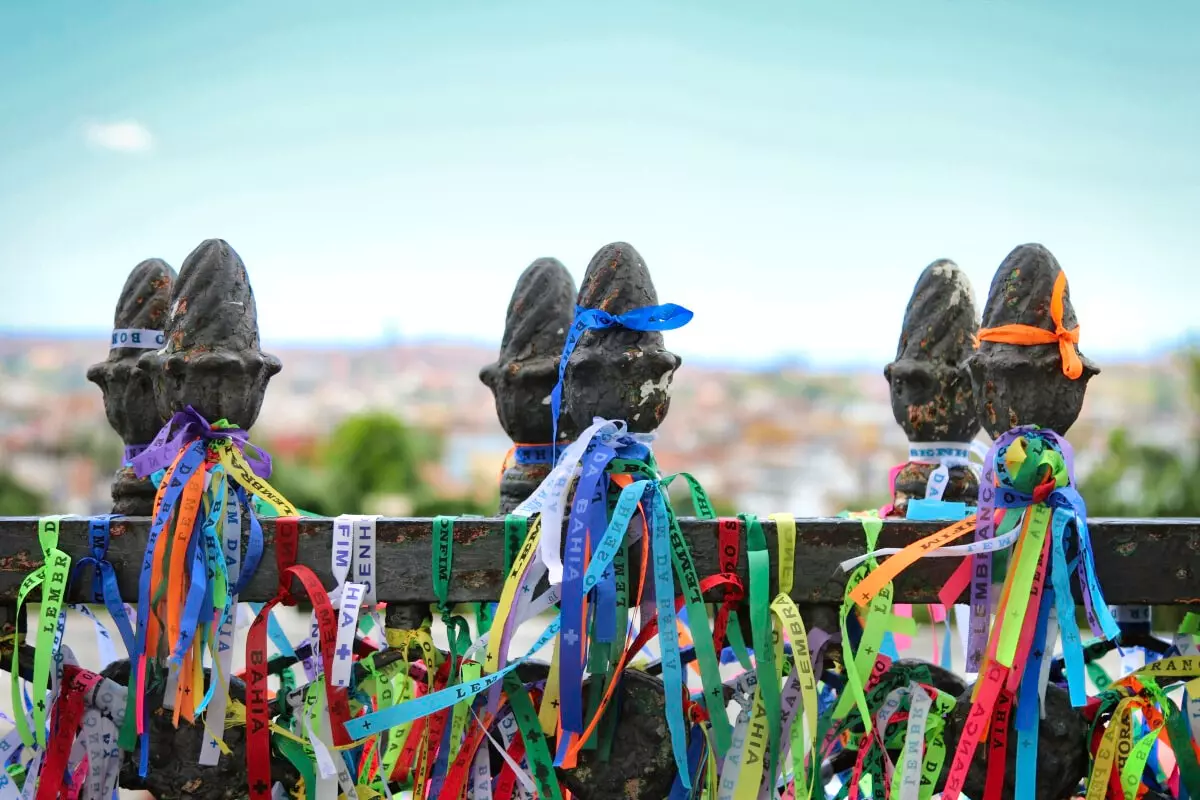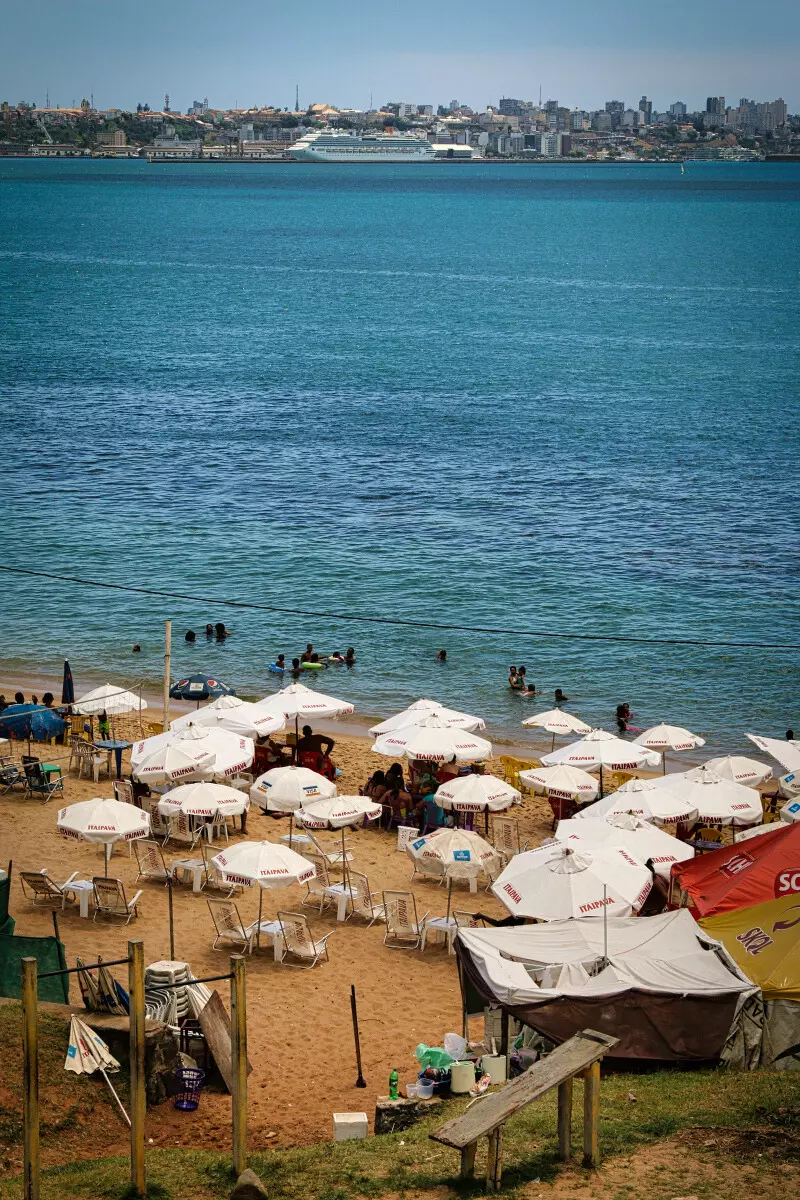Brazil is the longest country in the world! As a consequence, it is crossed by many different climate areas. Furthermore, its landscapes are very variegated. Situated in the north of Brazil, Salvador de Bahia is one of Brazil’s most colorful gems. With more than 2,5 million tourists visiting every year, it is one of the cities which attract the most tourists in Brazil. Not to mention that it’s a must see during your Brazilian trip. With no further ado let’s dive into the ultimate travel guide to Salvador de Bahia.
Disclosure: anitabeyondthesea.com is reader-supported. When you make a reservation through links on my site, I may earn an affiliate commission, at no extra cost for you. That will help me keep the blog up and running. Thank you!
Table of Content
- The best things to do in Salvador de Bahia
- Is Salvador de Bahia safe?
- When is the best time to visit Salvador de Bahia?
- Salvador de Bahia in 5 facts:
- In conclusion, is Bahia worth it?
The best things to do in Salvador de Bahia
Take a Capoeira Class
How about burning some calories with the sound of the berimbau while connecting to Afro-Brazilian ancestry?
Capoeira was once forbidden in Brazil. Nowadays It is one of its national symbols. Taking part in a masterclass is both fun and educative! You can join a Capoeira class with Associação de Capoeira Mestre Bimba. Situated in the city center, the school is nearby all the other main attractions and restaurants.
The cost of the lesson for one person is 30€. If you’re traveling with other people you may have group discounts. The classes take place every Saturday from 11 to 12 AM and they are divided into two parts. At first a demonstration from the masters, then It’s your turn to try. Don’t forget to wear pants as Capoeira is based on kicks and circular moves.

Sit with Jorge Amado and Zélia Gattai
While walking on the seafront, you may encounter a statue of two persons sitting on a bench with their dog. They are Jorge Amado and Zélia Gattai. Two of the most famous Brazilian writers, with their French bulldog Sadul. Made by artist Tatti Moreno, the sculpture is situated in the Largo de Santana, in front of the Santana Church. After they moved to Salvador, this was one of the couple’s favorite spots.
You can sit and take a picture with them while exploring the shops around.

Explore Pelourinho
It’s the neighborhood that goes from Largo do Pelourinho to Terreiro de Jesus. Pelourinho in Portuguese means the pillory stone where slaves were flogged. Eventually, It gave the name to the whole area, which was abandoned until the 20th century when it entered the UNESCO list.
This colored area is one of the most picturesque in the city. Street artists, musicians, and tasty restaurants liven up the festive atmosphere. Very often the neighborhood becomes part of larger celebrations and religious manifestations.
Note: be careful to the slippery ground! The very famous cobblestones that pave the neighborhood are slippery especially when it rains. Wear comfortable shoes to avoid an accidental fall.

Igreja do Senhor do Bonfim
If you’ve already wandered in Brazil, probably you’ve already seen the ribbons of Bonfim, knotted on church grates. This tradition comes from the Bahian city. And more specifically from the Basílica do Senhor do Bonfim. You can visit the basilica and the local museum, or hang your prayer ribbons on the external bars.
The Basilica has also an impressive room that collects prosthetic limbs tangling from the ceiling.

Elevador Lacerda
The Elevador Lacerda is the first urban elevator in the world. It was completed in 1873. Connecting the lower and upper cities. Its structure is 72 long. The elevator is located in the Baía de Todos os Santos, and it offers a beautiful view over the city. The price for the ticket is around 0,50 €.
Enjoy the beautiful orchids of Orquidario Bahia
Get lost among the perfumes and colors of Bahia’s Orchidarium. The visit will let you visit the greenhouses where the orchids are and the laboratory. The owner Ednildo will introduce you to the many species he grows, and the ones that are typical of the region.
The Orquidario also hosts courses to teach you how to run a successful garden on your own. As a photographer I really enjoyed this experience. The orchids are indeed an amazing subject to photograph and there are so many varieties.

Is Salvador de Bahia safe?
Salvador de Bahia is the capital of one of the poorest states in Brazil. For this reason, there are many beggars on the streets asking for money.
In addition to this, the crime rate is very high: 61,7 per 100.000. But besides these stats, it is a safe city to travel to. As long as you stay in the touristy areas. The beaches are safe as well but always prefer more crowded ones. Especially if you’re traveling solo.
When is the best time to visit Salvador de Bahia?
The best time to visit the Capital da Alegria (Capital of Happiness), is during Brazilian Summer, from November to March. It’s the dry season and it’s not really rainy. Even if the temperatures are high, as a coastal city, Salvador de Bahia benefits from the Atlantic Ocean to help reduce the heat wave during summer.
Although very touristy, the period from January to March is the best in general to visit Brazil. When preparing your itinerary, consider assisting to the Brazilian Carnival, one of the most famous in the world. The festivities take place every year from mid-February to the beginning of March.


Salvador de Bahia in 5 facts:
- The territory was discovered and settled in the 16th century.
- Salvador de Baia was Brazil’s capital from 1549 to 1763.
- The city was the second largest slavery harbor in the world, with over 1.500.000 slaves coming from Africa.
- As a result of the point above, nowadays 80% of the population is black. This means that it is the biggest city in number of black people outside Africa.
- Its nickname is Capital da Alegria, because of its festive events and lifestyle.
In conclusion, is Bahia worth it?
Absolutely! You shouldn’t skip Salvador de Bahia for many reasons. Its colors, scents, and joyful ambiance are only a few of the things that liven up this wonderful city!
Are you planning to visit? Make sure to read our Rio de Janeiro guide to add this iconic city to your itinerary as well.
Have you liked this post? Pin it for later!



